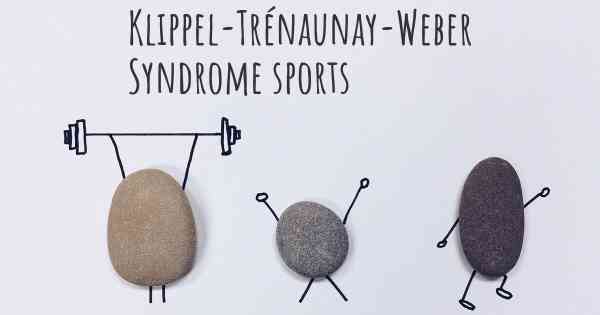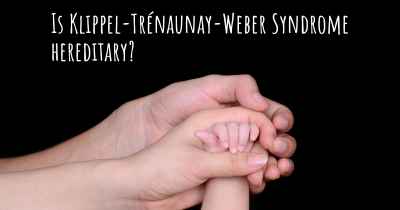Is it advisable to do exercise when affected by Klippel-Trénaunay-Weber Syndrome? Which activities would you suggest and how intense should they be?
See if it is advisable for people with Klippel-Trénaunay-Weber Syndrome to practice sports and which ones are the most recommended if you have Klippel-Trénaunay-Weber Syndrome

Exercise Recommendations for Klippel-Trénaunay-Weber Syndrome
Klippel-Trénaunay-Weber Syndrome (KTWS) is a rare congenital disorder characterized by the presence of port-wine stains, varicose veins, and soft tissue and bone overgrowth. While exercise is generally beneficial for overall health and well-being, it is important for individuals with KTWS to approach physical activity with caution and follow specific guidelines to ensure safety and minimize potential complications.
Benefits of Exercise
Engaging in regular exercise can provide numerous benefits for individuals with KTWS, including:
- Improved cardiovascular health: Exercise helps strengthen the heart and improve blood circulation, which can be particularly beneficial for individuals with varicose veins and venous insufficiency commonly associated with KTWS.
- Enhanced muscle strength and flexibility: Strengthening exercises can help support the affected limbs and improve overall mobility.
- Weight management: Maintaining a healthy weight can help alleviate strain on the affected limbs and reduce the risk of complications.
- Psychological well-being: Regular physical activity can boost mood, reduce stress, and improve overall mental health.
Exercise Recommendations
When considering exercise options for individuals with KTWS, it is crucial to prioritize safety and minimize the risk of injury or exacerbation of symptoms. Here are some exercise recommendations:
1. Low-impact aerobic exercises:
Engaging in low-impact activities that minimize stress on the joints and affected limbs is generally advisable. Some suitable options include:
- Walking: A low-impact exercise that can be easily incorporated into daily routines.
- Swimming or water aerobics: These activities provide buoyancy and reduce pressure on the joints, making them ideal for individuals with KTWS.
- Cycling: Using a stationary bike or cycling outdoors can be a great cardiovascular exercise with minimal impact on the joints.
2. Strength training:
Strength training exercises can help improve muscle strength and support the affected limbs. However, it is important to start with light weights and gradually increase intensity to avoid strain or injury. Focus on exercises that target the specific muscle groups affected by KTWS.
- Resistance band exercises: These exercises provide resistance without putting excessive strain on the joints.
- Bodyweight exercises: Utilizing one's own body weight for exercises like squats, lunges, and push-ups can be effective for building strength.
3. Flexibility exercises:
Stretching exercises can help improve flexibility and range of motion, reducing the risk of muscle imbalances and joint stiffness. Incorporate gentle stretching into your exercise routine, focusing on the affected limbs and surrounding muscles.
- Yoga: Practicing yoga can enhance flexibility, balance, and overall body awareness.
- Pilates: Pilates exercises can help strengthen the core and improve flexibility.
4. Consultation with healthcare professionals:
Before starting any exercise program, it is crucial to consult with healthcare professionals familiar with KTWS. They can provide personalized recommendations based on the individual's specific condition, symptoms, and limitations.
Exercise Intensity
The intensity of exercise should be tailored to the individual's abilities and limitations. It is important to listen to your body and avoid pushing beyond your comfort zone. Start with low to moderate intensity exercises and gradually increase as tolerated.
Monitoring heart rate can be a useful tool to gauge exercise intensity. The target heart rate should generally be within a safe range, which can be determined with the guidance of healthcare professionals.
Precautions and Considerations
While exercise can be beneficial for individuals with KTWS, it is essential to take certain precautions:
- Avoid high-impact activities: Activities that involve repetitive impact or jumping should be avoided to prevent injury or exacerbation of symptoms.
- Protect the affected limbs: Wearing appropriate compression garments or bandages can help support the affected limbs and reduce swelling during exercise.
- Stay hydrated: Proper hydration is important during exercise to maintain optimal blood circulation and prevent complications.
- Listen to your body: If any exercise causes pain, discomfort, or unusual symptoms, it is important to stop and consult with a healthcare professional.
Remember, every individual with KTWS is unique, and exercise recommendations should be tailored to their specific condition and limitations. Consulting with healthcare professionals and seeking guidance from experienced therapists or trainers can help ensure safe and effective exercise routines.
Posted May 30, 2017 by Fernanda 1100








